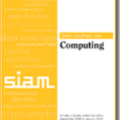We study the classic problem of subgraph counting, where we wish to determine the number of occurrences of a fixed pattern graph $H$ in an input graph $G$ of $n$ vertices. Our focus is on \emph{bounded degeneracy} inputs, a rich class of graphs that also characterizes real-world massive networks. Building on the seminal techniques introduced by Chiba-Nishizeki (SICOMP 1985), a recent line of work has built subgraph counting algorithms for bounded degeneracy graphs. Assuming fine-grained complexity conjectures, there is a complete characterization of patterns $H$ for which linear time subgraph counting is possible. For every $r \geq 6$, there exists an $H$ with $r$ vertices that cannot be counted in linear time. In this paper, we initiate a study of subquadratic algorithms for subgraph counting on bounded degeneracy graphs. We prove that when $H$ has at most $7$ vertices, then subgraph counting can be done in $O(n^{1.41})$ time. Moreover, if this running time can be beaten, it would imply faster algorithms for triangle counting on arbitrary graphs (a bound that has stood for two decades). We also prove that all cycles of length at most $10$ can be counted in $O(n^{1.63})$ time for bounded degeneracy graphs. Previously, no subquadratic (and superlinear) algorithms were known for subgraph counting on bounded degeneracy graphs. Moreover, if the input is an arbitrary (sparse) graph, the best known algorithms for the above problems run in at least cubic time. Our main conceptual contribution is a framework that reduces subgraph counting in bounded degeneracy graphs to counting smaller cycles in arbitrary graphs. We believe that our results will help build a general theory of subgraph counting for bounded degeneracy graphs.
翻译:暂无翻译




